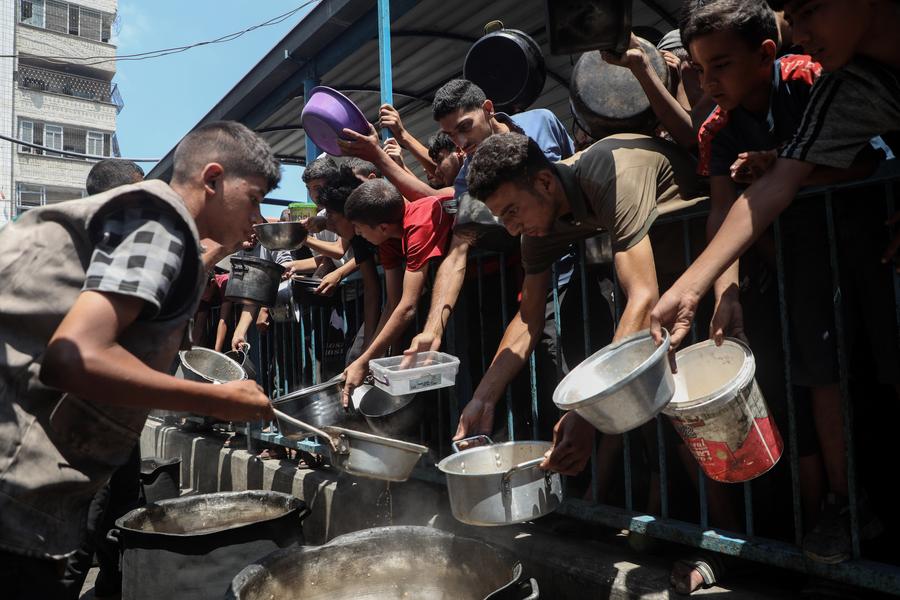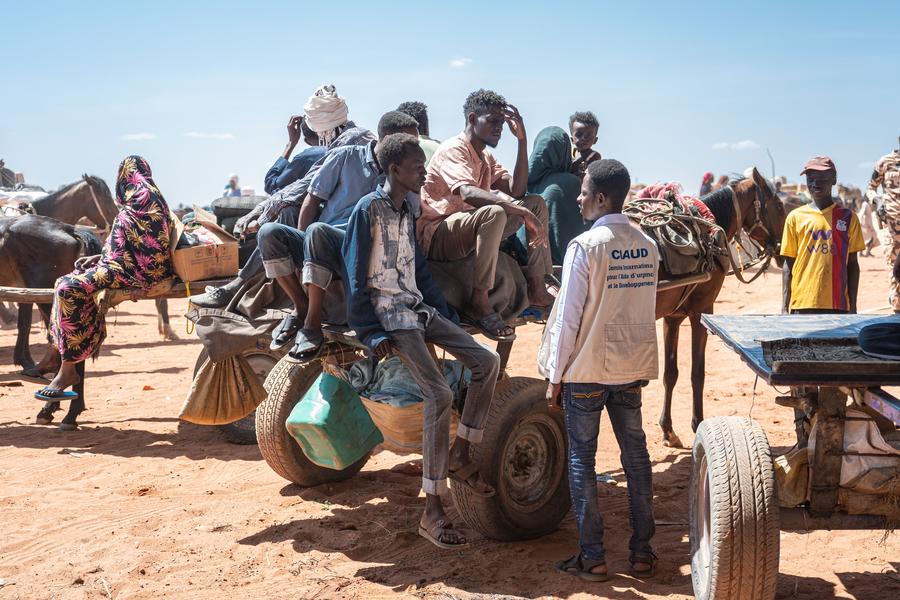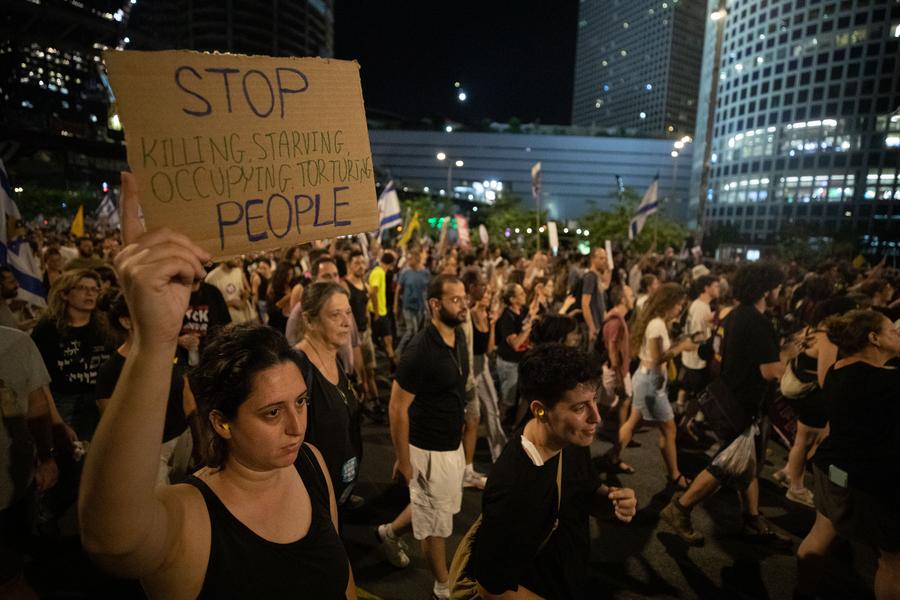
Displaced Palestinians wait to receive free food at a distribution center in Gaza City, on Aug. 18, 2025. (Photo by Rizek Abdeljawad/Xinhua)
From Gaza to Sudan, Syria to Yemen, relentless conflicts have triggered waves of humanitarian catastrophes.
CAIRO, Aug. 19 (Xinhua) -- World Humanitarian Day began as a tribute, but today it is a solemn reminder of the human capacity for cruelty and atrocity still widely evident in the Middle East.
From Gaza to Sudan, Syria to Yemen, relentless conflicts have triggered waves of humanitarian catastrophes, revealing a stark reality: even in an era of AI breakthroughs and interplanetary ambition, humanity's deadliest enemies remain hunger, deprivation, and the absence of safety.
In Gaza, where roughly 2 million people are packed into a strip of land of just 45 square km, the toll of conflicts is staggering. Local health authorities report more than 62,000 deaths since this round of conflicts broke out, including an estimated 18,000 children. The healthcare system has collapsed, and famine-related malnutrition has claimed over 260 lives.
In Sudan, relentless fighting has uprooted 12 million people -- nearly a quarter of the population -- leaving two-thirds dependent on a cripplingly underfunded aid system. In Yemen and Syria, more than a decade of war, siege and economic collapse has condemned millions to abject poverty, with hunger and disease lurking at every turn.

Sudanese refugees talk with a staff member from CIAUD at the entry point in Adre, Chad, on June 24, 2025. According to the statistic figures released by the UN earlier in June, more than 844,000 Sudanese refugees have fled to Chad after war broke out in Sudan in April 2023. (Xinhua/Wang Guansen)
These are not natural disasters -- they are deliberate acts of human destruction. Modern warfare does more than kill. It systematically erases the foundations of survival. Hospitals, schools, water sources and power grids are not collateral damage -- they are targets, ensuring that violence begets famine, disease and generational ruin.
Blockades turn siege into slow death. In Gaza, Sudan and Yemen, restrictions on food, fuel and medicine have pushed civilians toward starvation. The United Nations calls these acts illegal.
Even humanitarian aid, the last thread of hope, has been weaponized. In Gaza, the Gaza Humanitarian Foundation, backed by Israel and the United States, has sidelined UN agencies as primary aid distributors. Meanwhile, the UN human rights office reported that since late May, around 1,800 people have been killed while seeking aid.
Israel has disputed the figures, and the foundation has denied culpability. However, the truth is plain: humanitarian work is now a battleground.

People take part in a rally in Tel Aviv, Israel, Aug. 17, 2025. Tens of thousands of Israelis demonstrated on the day, demanding that Prime Minister Benjamin Netanyahu secure a deal with Hamas to end the Gaza war. (Xinhua/Chen Junqing)
Humanitarian workers have not been spared from danger. The United Nations Relief and Works Agency for Palestine Refugees in the Near East (UNRWA) reports that nearly 360 of its team members have been killed in Gaza since the current conflicts began -- a stark reminder that even those dedicated to saving lives are not safe.
At this critical juncture, the international community must forge a shared framework of responsibility to press all sides involved in the conflicts toward a ceasefire. Without silencing the guns, there can be no space for relief, let alone for rebuilding shattered lives.
Ceasefire, however, cannot stand alone. It must be paired with unimpeded humanitarian access -- through internationally monitored safe corridors that guarantee aid workers and supplies can reach those in need without obstruction or intimidation. Anything less would amount to abandoning civilians to despair.



